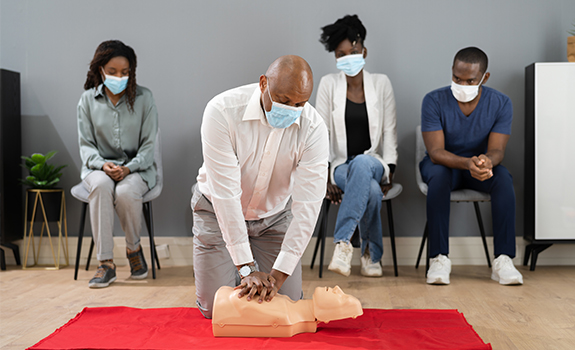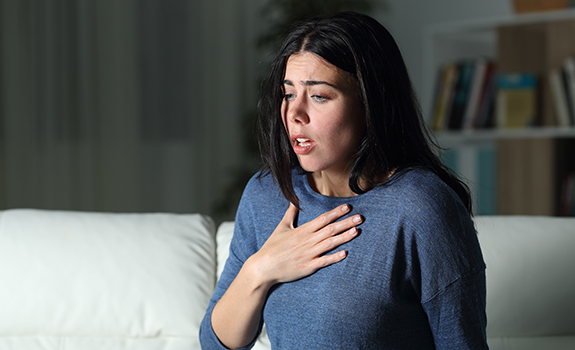Since the onset of the Covid-19 pandemic – and the high transmissibility of the virus – those in the healthcare industry and beyond have wondered if it’s still safe to perform CPR. The good news is, hands-only CPR remains a safe and effective way to help someone in cardiac arrest with a very low risk of transmitting the virus. You can even perform it while wearing a mask. Here is everything you need to know about staying safe from Covid-19 while giving CPR.
How Can You Protect Yourself While Giving CPR?
You don’t need to do mouth-to-mouth during a pandemic. Studies show that patients who received only chest compressions, rather than CPR with mouth-to-mouth breathing, have a similar likelihood of surviving to hospital discharge.
In fact, in 2008 The American Heart Association amended its CPR recommendations, issuing guidance that bystanders could perform hands-only CPR as the most effective means of trying to save someone’s life until help arrived. Providing high-quality chest compressions by pushing hard and fast in the middle of the victim’s chest, with minimal interruptions, is the quickest way to save a life.
Why is Mouth-to-Mouth No Longer Required?
If you took a CPR class ten years ago, you were likely taught to do chest compressions and how to perform mouth-to-mouth resuscitation. Today, mouth to mouth breaths are no longer emphasized, but rather presented as an option. Mouth to mouth breathing is considered a personal decision.
While medical professionals and people with advanced certifications still do perform mouth to mouth, the American Health Association has deemed it less useful for non-medical professionals to perform the procedure. Chest compressions are more important in keeping the patients alive, so the attention is now focused on teaching this method alone.
Can You Get Covid-19 From Performing CPR?
While it’s still possible to contract Covid-19 from any type of close contact, it isn’t likely when you’re performing hands-only CPR. The likelihood of performing CPR during real medical emergencies hadn’t lessened since 2020; in fact, giving CPR is still one of the most surefire ways to help save someone’s life if they are in cardiac arrest or experiencing another heart-related emergency. The bottom line? Hands-only CPR is a safe and effective way to help someone in cardiac arrest with a very low risk of transmitting the virus.
To stay as safe as possible while giving CPR, be sure to wear a mask or other type of protective equipment (PPE) during chest compressions.
Ready to get up-to-date on your CPR knowledge? Take a CPR class in San Diego or Tustin with Express Training today!




